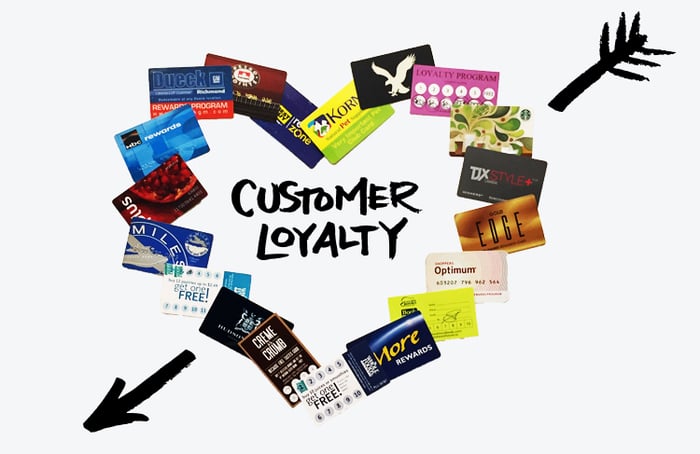When it comes to their relationship with brands, customers prefer to be polygamous. A 2016 report, for instance, shows that virtually 100 percent of consumers cheat on their favorite retailers. The report, conducted by customer relationship agency ICLP, found that consumers are less committed to brands than they’ve ever been, with only three percent feeling devoted toward their preferred retailers.
Despite the ephemeral nature of customer loyalty, however, retaining customers has never more important. From automotive to travel, almost every industry faces disruption and sees the entrance of upstarts. To defend—and expand—their market share, companies need to convince customers to keep coming back.
In an effort to reduce customer churn, many marketers revert back to an outdated way of retaining customers: loyalty programs. But as the following 13 customer loyalty stats make painfully clear, reward and frequent flier type of programs don’t necessarily keep customers from cheating on you.
What are the business benefits of improving customer loyalty?
- Acquiring new customers is anywhere from five to 25 times more expensive than retaining new ones, depending on your industry. (TWEET THIS STAT)
- Customer loyalty leads to profits. Increasing customer retention by just 5 percent boosts profits by 25 to 95 percent, according to the advisory firm Bain & Co. (TWEET THIS STAT)
- Investments in customer loyalty programs are trending up. For example, 57 percent of marketers plan to increase spending in customer loyalty programs in 2017 compared to this year. (TWEET THIS STAT)
How loyal are customers, really?
- A 2015 study by Alida found that 42 percent of Americans will stop shopping with a brand after just two bad experiences, regardless of whether they belong to a loyalty program or not. (TWEET THIS STAT)
- Even the customers who spend the most at your company aren’t necessarily loyal. According to the advisory firm McKinsey & Company, 25 to 50 percent of a brand’s highest spending customers also shop with its competitors. (TWEET THIS STAT)
- A Harvard Business School study suggests that a company’s highest spending customers are also the most likely to check out multiple brands. These big spenders are the quickest group to look elsewhere when they believe their relationship with a brand is beginning to go awry. (TWEET THIS INSIGHT)
How effective are customer loyalty programs?
7. A 2016 study found that customers who are members of loyalty programs, such as frequent flier clubs, generate between 12 and 18 percent more revenue than non-members. (TWEET THIS STAT)
8. A 2014 study shows 73 percent of consumers believe loyalty programs should be a way for brands to show loyalty to customers. Interestingly, 66 percent of marketers see the reverse: that loyalty programs offer a way for consumers to show their loyalty to a brand. (TWEET THIS STAT)
9. Loyalty programs fall short in one key area: convincing customers not to go to your competitors. In 2015, American households held memberships in an average of 29 loyalty programs, up 26 percent from 2013. (TWEET THIS STAT)
10. Most loyalty programs suffer from low engagement. In 2015, U.S. consumers participated in 50 percent of the loyalty programs they belonged to—a steep decline from the previous year’s 71.6 percent active participation rate. (TWEET THIS STAT)
What really drives customer loyalty?
- Customer engagement leads to customer retention. Research by Rosetta Consulting, for example, found that engaged customers are five times more likely to buy only from the same brand in the future. (TWEET THIS STAT)
- Highly-engaged customers buy 90 percent more often and spend 60 percent more per transaction, according to the Rosetta Consulting study. (TWEET THIS STAT)
- A strong emotional connection with a brand is a stronger driver of loyalty than factors like ‘ease’ and ‘effectiveness’, according to an annual benchmark published by the advisory firm Forrester Research. (TWEET THIS INSIGHT)
Companies have a growing customer loyalty problem and may not even know it.
And as the stats above show, reward and customer loyalty programs aren’t necessarily the fix. To keep customers from shopping around, companies need to focus on what actually matters: customer engagement. Winning the loyalty of customers requires investing in your relationship with customers.








